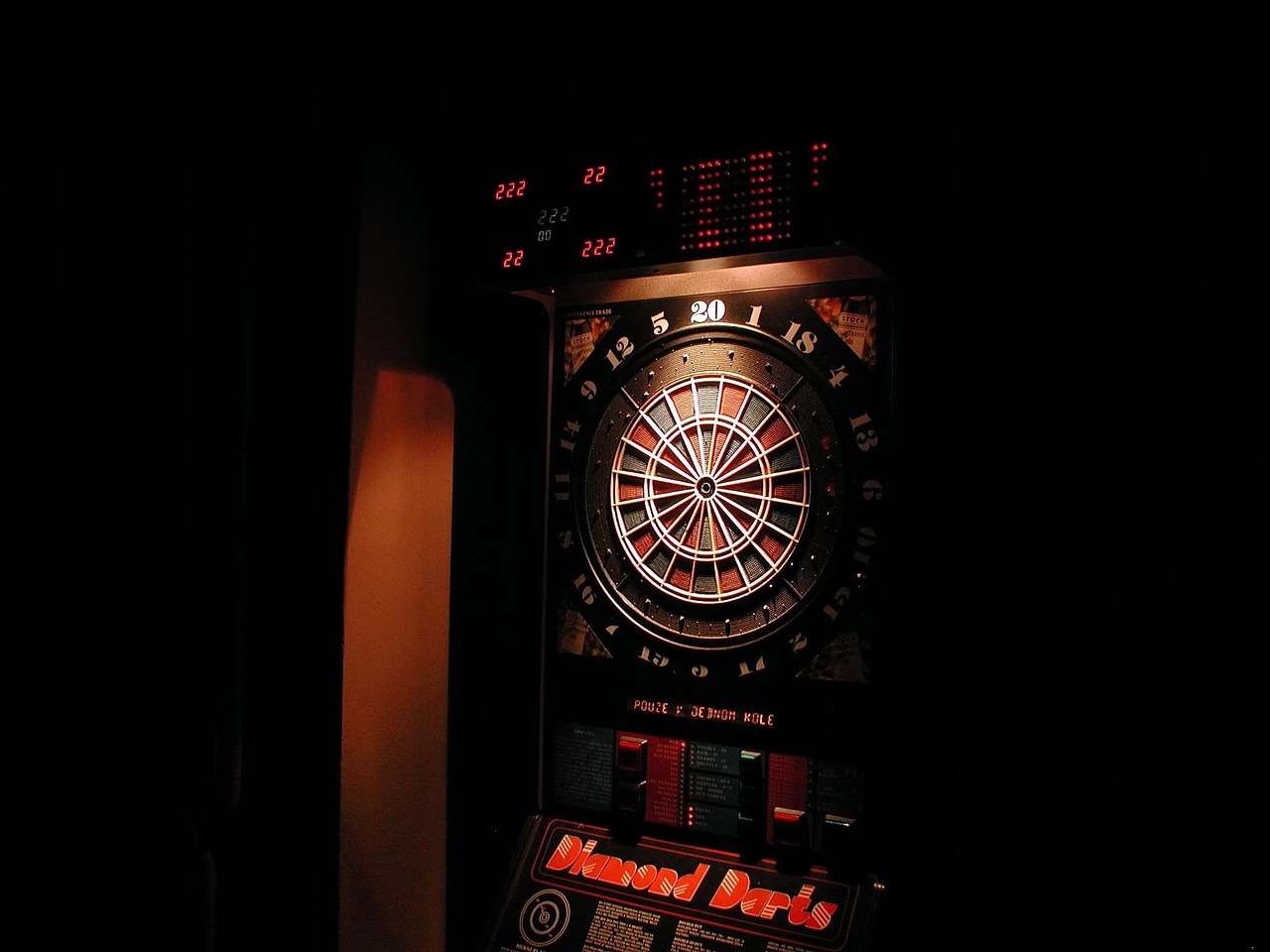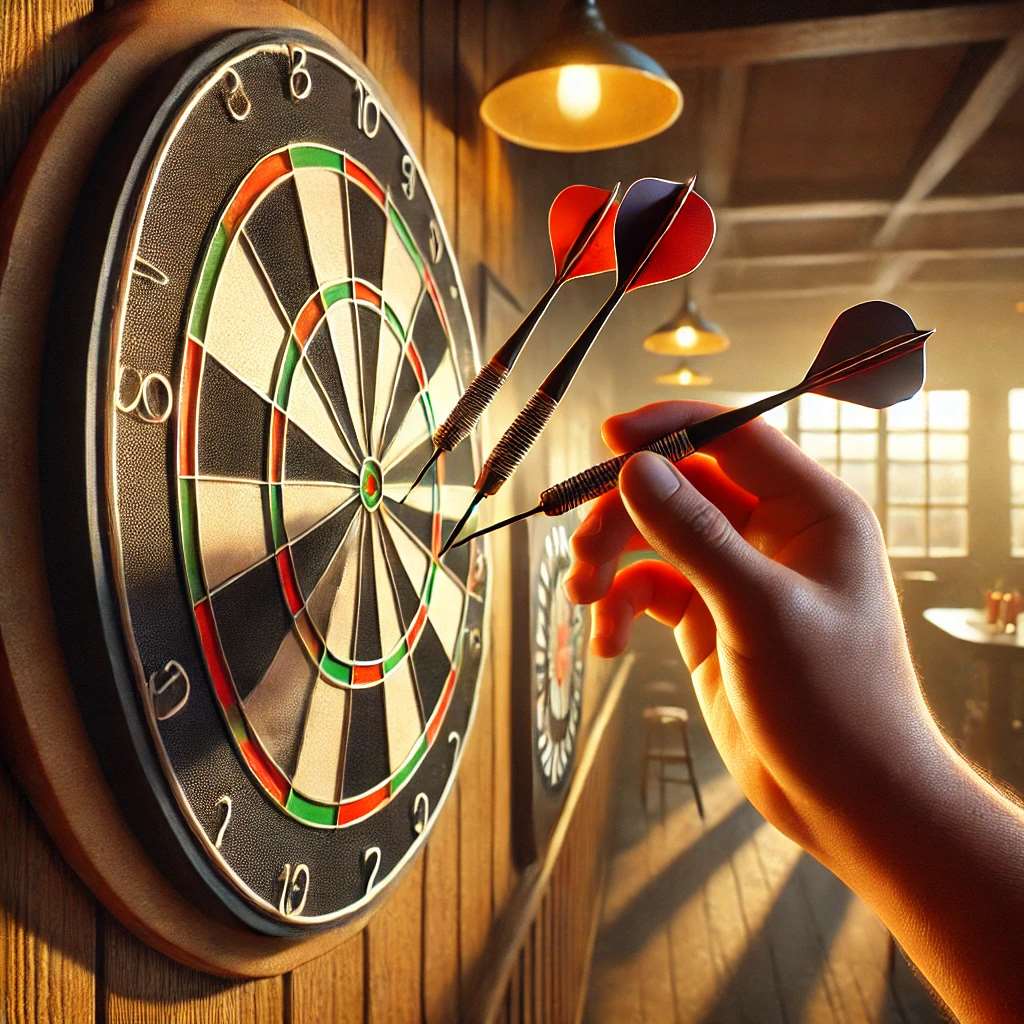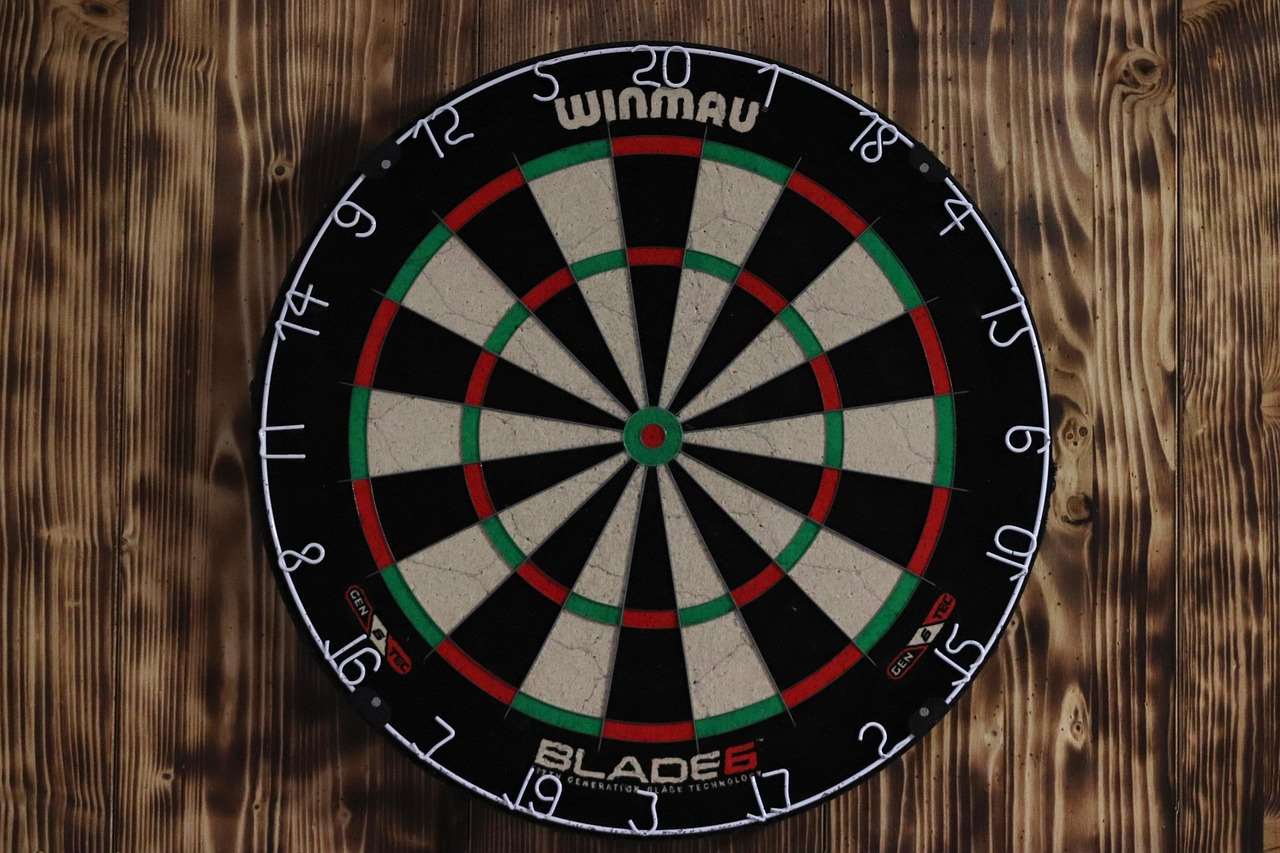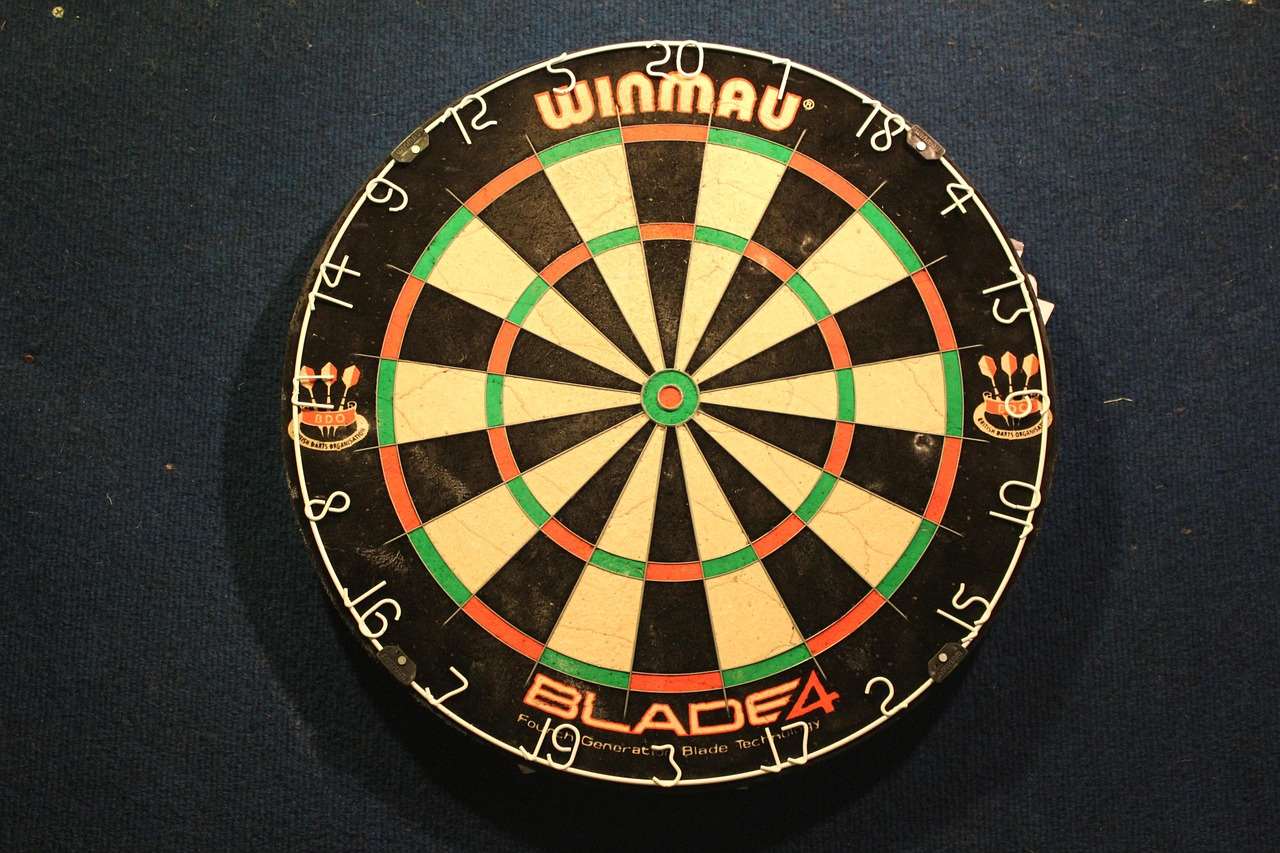Understanding what is sets and legs in darts is crucial for following the game and appreciating its strategic depth. Essentially, a match is divided into sets, and each set is comprised of a number of legs. This article will fully explain this scoring system, delve into the nuances of different match formats, and offer helpful tips for both players and spectators.
⚠️ Still Using Pen & Paper (or a Chalkboard)?! ⚠️
Step into the future! The Dart Counter App handles all the scoring, suggests checkouts, and tracks your stats automatically. It's easier than you think!
Try the Smart Dart Counter App FREE!Ready for an upgrade? Click above!
Let’s start with the basics. A leg in darts is a single game. The first player to reach a predetermined score (often 501) wins the leg. The process usually involves players taking turns throwing three darts at a time, deducting their score from the total. Sets, on the other hand, are groups of legs. A match is typically made up of a number of sets, and whoever wins the majority of sets wins the entire match. Knowing what is sets and legs in darts helps you fully understand how a match unfolds.
The number of legs required to win a set, and the number of sets in a match, will vary depending on the specific rules of the competition. For example, a professional match might be best of 5 sets, with each set requiring a player to win 3 legs.
What is Sets and Legs in Darts: A Deeper Dive

Now that we’ve covered the fundamental concept of what is sets and legs in darts, let’s explore some common match formats and how the sets and legs structure impacts gameplay. Understanding these nuances is key to appreciating the strategic decisions players make.
In many professional tournaments, you’ll find matches played as a best-of-sets format. For instance, a best-of-five sets match means the first player to win three sets wins the overall match. Within each set, the number of legs needed to win is often predetermined, such as first to three or first to five legs. This system adds layers of complexity to each match. Knowing who is ahead in sets, and how many legs are needed to win a set, allows you to accurately gauge the flow of the competition.
Furthermore, the order in which legs are won can significantly impact a match. While a player might ultimately win a set, losing legs earlier can impact momentum and mental fortitude. The pressure to perform and close out legs and sets efficiently is immense. A player that demonstrates consistency, closing out each leg efficiently, will often have the advantage over opponents that can be unpredictable or struggle to maintain focus throughout the length of the match.
Many casual dart players might play a simpler best-of-3 legs match. But the principles remain the same: the player who wins two legs takes the match. The simplicity of this format makes it ideal for recreational play but shows the core of what is sets and legs in darts.
Understanding Different Match Formats
The beauty of darts lies in its adaptability. The fundamental elements of what is sets and legs in darts remains consistent, yet the number of sets and legs needed to win can vary dramatically depending on the event. Let’s look at some examples:
- Best of 3 Sets (First to 2): Each set might be best of 3 legs. This means the first player to win two legs wins the set, and the first player to win two sets wins the match.
- Best of 5 Sets (First to 3): This increases the overall length of the match, requiring greater stamina and mental strength. Again, the number of legs needed to win each set remains adaptable.
- Best of 7 Sets (First to 4): This format is common in major professional events and represents a grueling test of skill and endurance. These matches often stretch over several hours and are filled with dramatic twists and turns.
Players often prepare differently depending on the length and format of the competition. This highlights the importance of understanding what is sets and legs in darts before embarking on a match, whether it be casual play or a significant tournament.
Practical Tips for Understanding and Playing Darts

Beyond simply knowing what is sets and legs in darts, there are several practical tips that can elevate your game, whether you’re a seasoned professional or a casual player. These tips will help you focus on the important aspects that will allow you to perform consistently.
Mastering the Basics: Aim, Technique, and Practice
Before diving into complex strategies, ensure you’ve honed your fundamental dart skills. This includes consistent aim, proper throwing technique, and dedicated practice sessions. Consistency is key! You can learn more about perfecting your technique by checking out resources on our sister site, Dart Counter App.
Mental Game: Staying Focused and Managing Pressure
Darts is as much a mental game as it is a physical one. Managing pressure, staying focused, and maintaining a positive attitude are essential, especially during long matches with multiple sets and legs. A calm mind leads to a steady hand. Remember that even the best players experience setbacks – it’s how you respond to them that matters.
Strategic Gameplay: Adapting to Your Opponent
Observe your opponent’s playing style. Note their strengths and weaknesses. Adjust your strategy accordingly; perhaps targeting specific numbers they struggle with or altering your finish to counter their preferred approach. This is where understanding what is sets and legs in darts becomes truly important. Knowing how many legs are left in a set and how many sets are left in the match dictates your approach towards the game. Adaptability is key to success in a strategic game like this.
What is Sets and Legs in Darts: Beyond the Basics

While the core of what is sets and legs in darts is simple, the strategies and intricacies involved can be surprisingly complex. Let’s explore some advanced considerations.
The Importance of Checkouts
A checkout is the final sequence of throws needed to reduce a score from a remaining number down to zero. Mastering different checkouts can significantly impact your ability to win legs quickly and efficiently. Learning and practising different checkouts can significantly improve your game.
Understanding Average Scores
Monitoring your average score per three darts provides valuable insight into your overall performance. A higher average typically indicates greater accuracy and consistency. This allows you to observe progress, identify areas for improvement and gives you benchmarks to aim for.
Leveraging the Double-In/Double-Out Rule
To win a leg, the final dart must hit a double. This adds another layer of skill and strategy to the game. The double-in/double-out rule is a central element in what is sets and legs in darts. You must hit a double to finish the game.
Common Mistakes to Avoid
Even seasoned players make mistakes. Knowing these pitfalls can help you improve your game.
- Ignoring your opponent’s strategy: Always analyze your opponent’s style. Understand what is sets and legs in darts as it pertains to them and respond accordingly.
- Poor checkout selection: A poorly chosen checkout can lead to a missed opportunity and lost leg.
- Lack of practice: Consistent practice will sharpen your skills and enhance your consistency.
- Mental fatigue: Long matches take a mental toll. Learning to manage this fatigue is essential.
- Ignoring basic technique: Perfecting the basics like stance and grip is crucial for long-term success.
Conclusion: Mastering the Art of Darts

Understanding what is sets and legs in darts is fundamental to enjoying and excelling at this popular game. From grasping the basics of legs and sets to mastering strategic gameplay and mental fortitude, the journey to becoming a skilled darts player involves continuous learning and adaptation. Remember to focus on consistent practice, learn from your mistakes, and always analyze your opponent’s playing style. By combining a strong understanding of what is sets and legs in darts with honed skills and a resilient mindset, you can significantly improve your game.
So grab your darts, hit the oche, and start practicing! Whether you’re aiming to win a local tournament or simply enjoy a casual game with friends, mastering the core concepts of the game will greatly enhance your experience. Remember to check out resources like darts flight kits for improving your game. And remember, the path to mastery is paved with consistent effort and understanding.
Consider exploring further resources such as information on highest darts premier league points, or checking out dartsking for more advanced techniques. You might also find interesting articles on Francois Schweyen darts or dart monkey.
Want to improve your game further? Check out these other articles on our site:

Hi, I’m Dieter, and I created Dartcounter (Dartcounterapp.com). My motivation wasn’t being a darts expert – quite the opposite! When I first started playing, I loved the game but found keeping accurate scores and tracking stats difficult and distracting.
I figured I couldn’t be the only one struggling with this. So, I decided to build a solution: an easy-to-use application that everyone, no matter their experience level, could use to manage scoring effortlessly.
My goal for Dartcounter was simple: let the app handle the numbers – the scoring, the averages, the stats, even checkout suggestions – so players could focus purely on their throw and enjoying the game. It began as a way to solve my own beginner’s problem, and I’m thrilled it has grown into a helpful tool for the wider darts community.